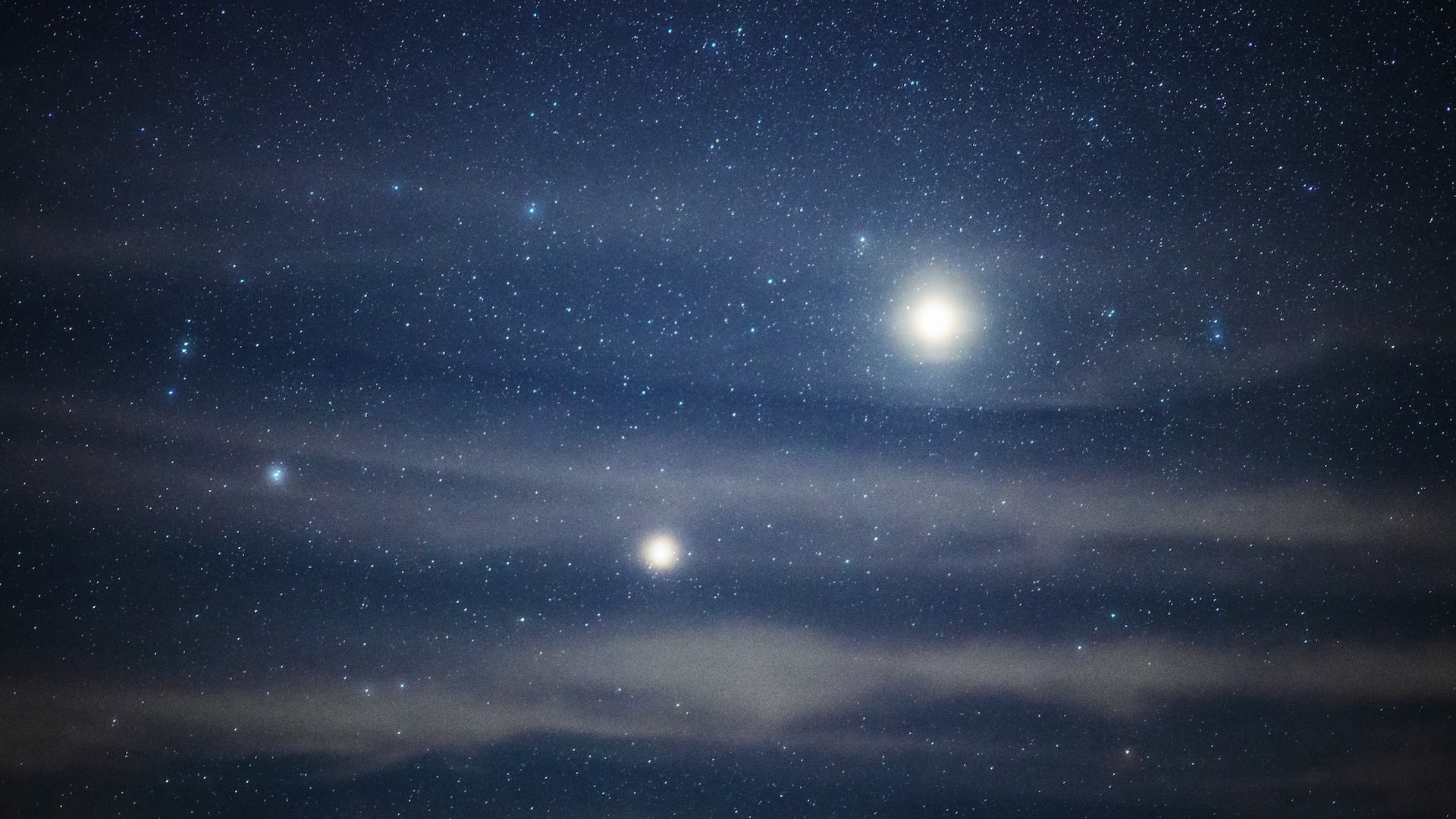
In the early hours of Wednesday morning (Aug. 14), two of the solar system's brightest and most famous planets will appear to pass exceptionally close to each other. In this rare conjunction of Jupiter and Mars, the two planets will lie a mere third of a degree apart in the night sky.
A planetary conjunction describes when two or more planets appear to be close to each other. This conjunction will be best seen from around 2:00 a.m. local time until dawn on Wednesday. During that time, the two planets will rise in the northeastern night sky with the constellation Taurus, and move about 50 degrees above the eastern horizon by daybreak.
Although Jupiter will be about 20 times brighter than Mars, both planets will be easily visible to the naked eye from anywhere in the world with clear skies. However, a good pair of stargazing binoculars or a small telescope will enhance the view. Not only will you see the planets more clearly with such optical aids, but the four largest moons of Jupiter will also be visible. Ganymede and Callisto will flank Jupiter, with the highly volcanic moon Io and potentially habitable Europa between Jupiter and Ganymede. Mars will appear slightly above Jupiter and its moons.
If you can't catch the conjunction in person, the Virtual Telescope Project, based in Italy, will host a livestream of the entire celestial event as it becomes visible over Europe. The stream begins at 10:30 p.m. ET tonight (Tuesday, Aug. 13). You can catch it on YouTube, or in the embedded video below.
Although the planets will appear to be very close together during this conjunction, that is merely an optical illusion. In reality, Mars is in the foreground and Jupiter is 300 million miles (500 million km) further away, according to EarthSky.
Related: The Perseid meteor shower is about to peak. Here's when to see the most 'shooting stars'.
This planetary conjunction is the last of the year. The next one will take place on Jan. 20, 2025, when Venus and Saturn will cross paths. However, the next planetary highlight for skywatchers will be the annual opposition of Saturn.
On Sept. 7, Earth will be precisely between the sun and Saturn, with the ringed planet at its apparent biggest, brightest and best of the year. Any telescope will enable you to see its unique ring pattern.
Editor's note: This story was updated on Aug. 13 with information about the Virtual Telescope Project stream.







